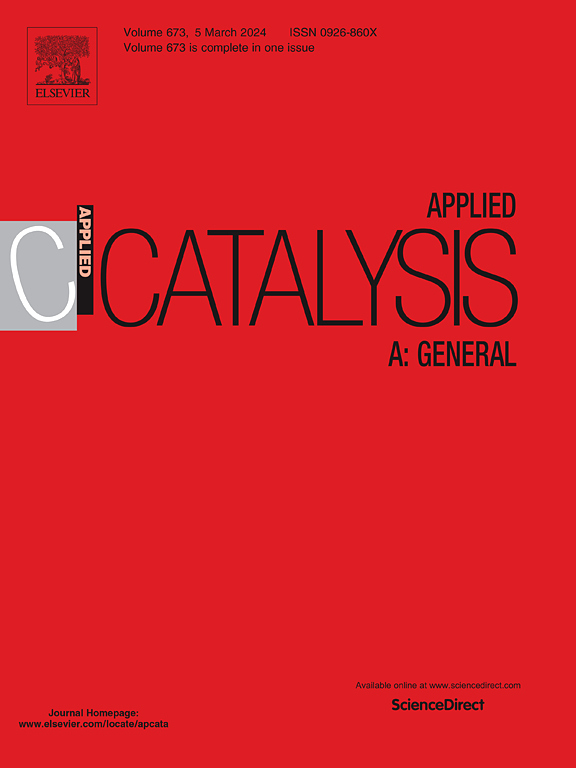Use of a 416B-type central-hybrid experimental design to evaluate the synthesis conditions of TiO2/biochar composites on the solid-state photocatalytic degradation of polypropylene-plastic films
IF 4.7
2区 化学
Q2 CHEMISTRY, PHYSICAL
引用次数: 0
Abstract
This study presents an innovative application of solid-state photocatalysis using environmentally friendly TiO2/biochar composites to degrade polypropylene (PP) films and reduce plastic pollution. Biochar, derived from coconut shells via controlled pyrolysis, was combined with TiO2 to enhance photocatalytic activity. A 416B-type Central-Hybrid Experimental Design was used to optimize synthesis parameters, revealing that biochar produced at 280°C with 4.1 % v/v oxygen and a TiO2/biochar weight ratio of 1.5 yields the best results. After 25 days of UV irradiation, films incorporated with TiO2/biochar composites exhibited an 8.7 % weight loss and a carbonyl index of 11.4—significantly surpassing pristine PP films. These findings demonstrate the potential of biochar as a sustainable solution to reduce nanotoxicity while boosting polymer degradation efficiency. This work contributes to the development of eco-friendly materials for mitigating plastic waste challenges.
采用416b型中心杂化实验设计,评价TiO2/生物炭复合材料对聚丙烯塑料薄膜的固态光催化降解的合成条件
本研究提出了一种利用环境友好型TiO2/生物炭复合材料进行固态光催化降解聚丙烯(PP)薄膜并减少塑料污染的创新应用。通过控制热解从椰子壳中提取生物炭,并与TiO2结合以增强光催化活性。采用416b型中心杂化实验设计对合成参数进行优化,结果表明,在280℃、4.1 % v/v氧气条件下,TiO2/生物炭质量比为1.5时制备的生物炭效果最佳。经过25天的紫外线照射后,TiO2/生物炭复合材料的膜质量下降了8.7% %,羰基指数为11.4,显著超过了原始PP膜。这些发现证明了生物炭作为一种可持续的解决方案的潜力,可以降低纳米毒性,同时提高聚合物的降解效率。这项工作有助于开发环保材料,以减轻塑料废物的挑战。
本文章由计算机程序翻译,如有差异,请以英文原文为准。
求助全文
约1分钟内获得全文
求助全文
来源期刊

Applied Catalysis A: General
化学-环境科学
CiteScore
9.00
自引率
5.50%
发文量
415
审稿时长
24 days
期刊介绍:
Applied Catalysis A: General publishes original papers on all aspects of catalysis of basic and practical interest to chemical scientists in both industrial and academic fields, with an emphasis onnew understanding of catalysts and catalytic reactions, new catalytic materials, new techniques, and new processes, especially those that have potential practical implications.
Papers that report results of a thorough study or optimization of systems or processes that are well understood, widely studied, or minor variations of known ones are discouraged. Authors should include statements in a separate section "Justification for Publication" of how the manuscript fits the scope of the journal in the cover letter to the editors. Submissions without such justification will be rejected without review.
 求助内容:
求助内容: 应助结果提醒方式:
应助结果提醒方式:


